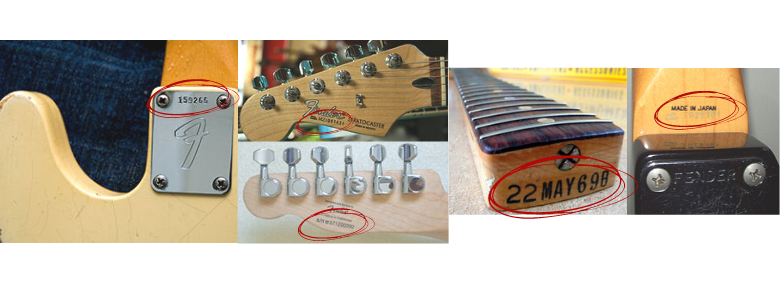

- #Fender guitar serial number dating serial numbers#
- #Fender guitar serial number dating professional#
- #Fender guitar serial number dating series#
Vintage Series instruments and “V”-prefix serial numbers. SERIAL NUMBERSġ982 saw the introduction of the U.S. As seen in the overlap of numbers and years, even these references to actual production dates are rather loose.
#Fender guitar serial number dating serial numbers#
Serial numbers with an “S” prefix denote the 1970s (signifying a CBS attempt to use serial numbers to identify production years) an “E” prefix was introduced in 1979 to denote the 1980s.
#Fender guitar serial number dating professional#
The only way to try to narrow the date range of your specific instrument is to remove the neck and check the butt end of the neck heel for a production date, which may be stamped or written there (if you’re uncomfortable doing this yourself, please refer to an experienced professional guitar tech in your area). Once again, there is quite a bit of overlap in numbers and years. The charts below detail the most common Fender serial number schemes from 1976 to the present. Notice that there is quite a bit of overlap in numbers and years. The chart below details Fender serial number schemes used from 1965 to 1976. Serial numbering didn’t change immediately because instruments continued to be made using existing, tooling, parts and serial number schemes. SERIAL NUMBERSįender was sold to CBS in January 1965.

The chart below details Fender serial number schemes used from 1950 to 1964. Serial numbers were stamped on the back vibrato cover plate on early ’50s Stratocaster® guitars, and on the bridge plate between the pickup and the saddles on some Telecaster® guitars.īut once again, due to Fender’s modular production methods and often non-sequential serial numbering (usually overlapping two to four years from the early days of Fender to the mid-1980s), dating by serial number is not always precisely definitive. For years, serial numbers have been used in various locations on Fender instruments, such as the top of the neck plate, the front or back of the headstock and the back of the neck near the junction with the body. Serial numbers are also helpful in determining an instrument’s production year. While there have been periods of dramatic change-such as the transition periods between the Leo Fender years and the CBS years or the transition between the CBS years and the current ownership-most models are generally feature-specific and do not change from year to year. Most specifications for a given Fender instrument model change little (if at all) throughout the lifetime of the model. Therefore, while helpful in determining a range of production dates, a neck date is obviously not a precisely definitive reference. Given the modular nature of Fender production techniques, an individual neck may have been produced in a given year, then stored for a period of time before being paired with a body to create a complete guitar, perhaps, for example, in the following year. Neck-dating can be useful in determining the approximate age of a guitar, but it is certainly not definitive because the neck date simply refers to the date that the individual component was produced, rather than the complete instrument. Most notably, production dates have been penciled or stamped on the butt end of the heel of the neck of most guitars and basses, although there were periods when this was not consistently done (1973 to 1981, for example) or simply omitted. instrument production history, production dates have been applied to various components. Hit the jump to see just how old that guitar or bass really is.įor most of Fender’s U.S. This information is courtesy, republished here for your convenience. Information on Japanese and Mexican-made instruments is included towards the bottom. If you have a Fender in your hands, you can use this guide to precisely date your Fender instrument all the way back to 1950. When was my Fender instrument made? It’s a common question we get at The Music Zoo.


 0 kommentar(er)
0 kommentar(er)
